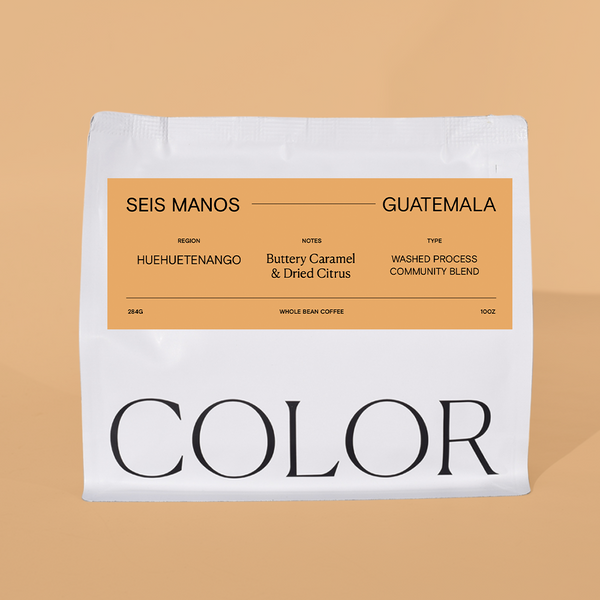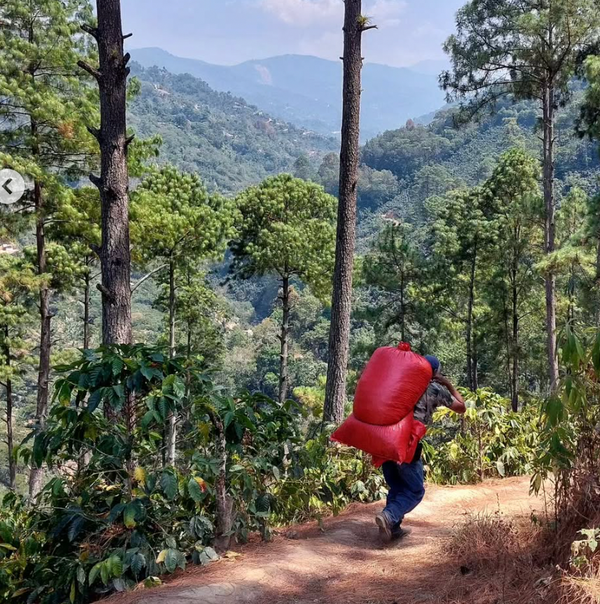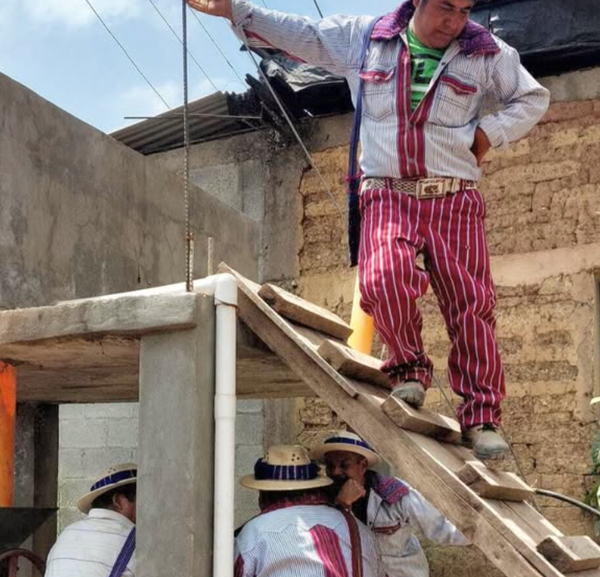Guatemala Seis Manos
GUATEMALA
SEIS MANOS
BUTTERY TOFFEE, DRIED CITRUS, DRIED APRICOT + CHOCOLATE MILKSHAKE
BEAN DETAILS:
ORIGIN: Huehuetenango, Guatemala
PRODUCER: Antonio Martínez, Erick Perez, Cruz Perez (to name a few)
ELEVATION: 1,560 - 1,800 masl
PROCESS: Washed
TASTING NOTES: Buttery toffee, dried citrus, dried apricot, and chocolate milkshake.
ROAST TYPE: Light
Farm Level
Huehuetenango is an ideal place to grow coffee—limestone soils, high mountain altitudes, cold nights, and hot days all come together to allow for the production of high-quality coffee. Our coffees from Guatemala sometimes arrive a bit later in the year because we're waiting for the coffees from Huehuetenango to ripen and be processed, and we're committed to waiting for our partner producers' last pickings to dry so that we can pay premium prices for their lots. This is an area where small farmers process and dry their own coffee, as opposed to selling red cherries to the local coyote. Selling dry parchment coffee allows smallholders to capture the largest portion of value possible.
This blend represents our purchasing commitment in action—we want to ensure that we can purchase a wide variety of coffees from long-term producer partners, including coffees that perform best when blended together. Traditional sourcing models often reward only a small portion of a producer's harvest—the very highest-scoring microlots—while the rest is left behind or undervalued. With long-term relationships and clear communication during the harvest season, the producers we work with know they can count on us to purchase a range of their coffees, and they process their cherries carefully, knowing their work will be fairly valued and compensated.
The 2025 purchasing season was challenging—volatile coffee prices created incentives for many producers without obvious buyers to pick cherries quickly to take advantage of high prices in an uncertain context. High fertilizer prices and inflation continued to keep producers' costs elevated this season.
About a few of the contributors to this community lot:
Antonio Martínez is a second-generation coffee producer from El Chalum, Huehuetenango. He manages two lots—Cerro Verde and Lote de la Finca—planted with Bourbon, Caturra, San Ramón, and Gesha. Antonio is relatively new to specialty coffee yet already committed to experimentation and quality, using terracing, soil testing, and a blend of organic and chemical fertilization to improve plant health and yields. He oversees processing and shares physical infrastructure with his father, Jorge. Labor shortages and input costs were the key challenges of the season.
Erick Perez contributed two lots from separate parcels: Las Cuevas (the largest of his lots) at 1,800 masl, and his smaller plot called Las Ventanas at 1,560 masl in Hoja Blanca. Erick works alongside his father Adiel to process his coffee, and he has been pushing his family to focus on quality processing. They process all of their coffee at a wet mill across the street from the family home, using a screen to keep under- and over-ripe cherries out of the fermentation tank and fermenting the coffee carefully to prevent the coffee mass from getting too hot. They grow Caturra and Bourbon varieties on their parcels.
Cruz Perez is in charge of commercializing the ASDEFLOR association's coffee. His coffee parcels sit at an average altitude of 1,700 masl and are home to Caturra, Bourbon, and Villa Sarchí varieties. Don Cruz championed the construction of the association's collective wet mill, which features large concrete tanks, patio space, and African beds. This wet mill has elevated the quality of individual producers' coffees, many of whom don't have reliable access to electricity, clean water, or proper drying facilities to process their excellent cherries to specialty standards.
General Brewing Instructions
- Filtered water. Spring water is ideal. Removing chloride, sulfur, and iron is essential.
- A burr grinder. The more even the coffee particles, the better the coffee. Burr grinders, whether manual or electric, will do a better job than "whirly-blade" grinders. Invest in a burr grinder. Your taste buds (and coffee roaster) will thank you.
- A scale. I know using a scale can seem a bit like you're doing something you shouldn't be. Trust me, you can only brew consistently great coffee with a scale. Water and coffee are hard to measure without one.
- Clean equipment. Properly cleaning your equipment is the only way to avoid stale and rancid coffee flavors entering your cup. Please keep your equipment clean. The sooner and more often you clean your gear, the easier it will be in the long run. Add it to your ritual and thank us later.
- Delicious and freshly roasted Color Coffee
- Hario V60 02. Check out Scott Rao's video on how to brew a better pourover than your local cafe does.
- French Press. Check out James Hoffman's video on how to brew a next level cup.
- Aeropress. Check out Tim Wendelboe's video on how to brew an exceptionally easy and delicious cup.
Coffee Faq
IS YOUR COFFEE ORGANIC OR FAIR TRADE?
In many cases, yes. However, our first priority is quality and flavor. Sometimes these priorities align and our producers are certified organic and/or fair trade. We always pay well above fair trade rates (which are quite low and don’t guarantee sustainability or quality).
Often times, the producers we work with are too small to gain certifications. It’s expensive and laborious. Many of our producers are certified organic and fair trade, including many of our producers in Peru, Ethiopia, and Mexico.
WHAT IS THE BEST TIME-FRAME TO DRINK MY COFFEE?
We recommend drinking our coffee within one month of the roast date. Most of our coffees taste best however within 2 - 14 days of roast date.
For espresso, we recommend using coffee that has rested at least 7 days after roast date. This is because coffee gives off CO2 after roasting that can interfere with extraction. One way to get around this is to let your ground espresso dose sit for 30-120 minutes before pulling the shot. Email info@colorroasters.com for more questions about this.
If you are pre-grinding the coffee, we recommend drinking the coffee within one week of grinding.
CAN YOU GRIND MY COFFEE ON WEB ORDERS?
Yes, we can. Please select how you want your coffee to be ground at the time you place your order. Simply click on the arrow beside "Grind" and make your selection. If you need help choosing let us know the brewing method you will be using to prepare the coffee, in the notes of the order. And we will be happy to grind the coffee for you on our commercial grinder.
DO YOU HAVE BREW RECIPES?
These are in the works! We are compiling a bunch and even shooting some video, to help you brew like us at home.
In the meantime...go here: Pour Overs | Aeropress to get some expert advice.
MY COFFEE TASTES WEAK, WHAT'S THE PROBLEM?



